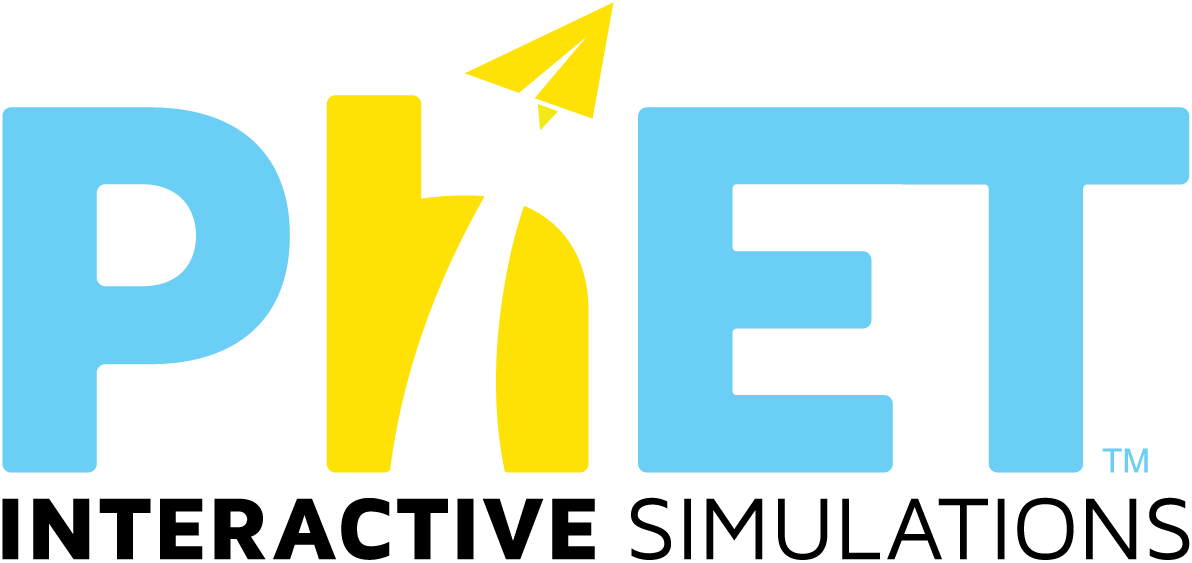البحث عن استفسار: ٣٣٤
المحاكاة
- Balloons and Static Electricity
- Beer's Law Lab (HTML5)
- Energy Skate Park: Basics (HTML5)
- Masses and Springs (HTML5)
- Molecule Shapes (HTML5)
- pH مقياس (HTML5)
- States of Matter (HTML5)
- Wave Interference (HTML5)
- أساسيات التعبير الجيني (HTML5)
- أساسيات حالات المادة (HTML5)
- إشعاع الجسم الأسود (HTML5)
- أشكال الجزيء (HTML5)
- أشكال الطاقة وتحولاتها (HTML5)
- إضافة المتجهات (HTML5)
- الأملاح والذوبانية
- الإنتشار (HTML5)
- الاحتكاك (HTML5)
- الانتقاء الطبيعي (HTML5)
- الانشطار النووي
- البالونات والكهرباء الساكنة (HTML5)
- البصريات الهندسية (HTML5)
- التركيز (HTML5)
- التفاعلات وسرعتها(معدلها)
- التقدير
- التوصيلية
- الجاذبية والمدارات (HTML5)
- الحركة في بعدين
- الرجل المتحرك
- الرنين الميكانيكي
- الشحنات والمجالات (HTML5)
- الضغط (HTML5)
- العزم
- العصبون (HTML5)
- الكتلة والزنبرك: أساسيات (HTML5)
- الكتل والزنبرك
- الكثافة (HTML5)
- الليزر
- المتفاعلات والنواتج والمخلفات (HTML5)
- المناطيد والطفو
- المنحدر
- الميكروويف
- النظائر والكتلة الذرية (HTML5)
- انحناء الضوء (HTML5)
- بناء الجزئ (HTML5)
- بناء ذرة (HTML5)
- بناء نواة (HTML5)
- تحلل ألفا
- تحلل بيتا
- تشتت رذرفورد (HTML5)
- تفاعلات قابلة للعكس
- تمثيل الاتزان (HTML5)
- جهد البطارية
- جون ترافولتاج (HTML5)
- حركة المقذوفات (HTML5)
- خصائص الغاز (HTML5)
- دائرة الإشارة
- دوران الخنفساء
- رؤية الألوان (HTML5)
- راسم المعادلات
- ظاهرة البيت الزجاجي (HTML5)
- ظاهرة التأثير الكهروضوئي
- قانون أوم (HTML5)
- قانون فاراداي (HTML5)
- قانون كولوم (HTML5)
- قانون هوك (HTML5)
- قطبية الجزيء (HTML5)
- قنوات الغشاء الخلوي
- لعبة التاريخ الاشعاعي
- لعبة الهوكي الكهربائية - مستلة من عمل روث تشابي
- مبادئ القوة و الحركة (HTML5)
- محاليل الحمض والقاعدة (HTML5)
- مختبر قوة التجاذب: أساسيات (HTML5)
- مركبة الهبوط القمرية
- مصنعة الجينات: اللاك أوبريون
- معمل البندول (HTML5)
- معمل قوة الجذب (HTML5)
- مقاومة سلك (HTML5)
- مقدمة الموجات (HTML5)
- مقياس الرقم الهيدروجيني: أساسيات (HTML5)
- موجات الراديو
- موجات الصوت
- موجة على وتر (HTML5)
- مولارية (HTML5)
- وزن المعادلات الكيميائية (HTML5)
- علم الحساب (HTML5)
- التفاعلات الذرية (HTML5)
- الطفو (HTML5)
- بناء الكسر (HTML5)
- منحنى المناسب (HTML5)
- حساب التفاضل والتكامل (HTML5)
- قطبية الجزيئة
- نظامي الشمسي (HTML5)
- مطابقة الكسر (HTML5)
- مقدمة الكسور (HTML5)
- الطاقة في منتزه التزلج (HTML5)
- بناء المساحة (HTML5)
- جبر نموذج المساحة (HTML5)
- نموذج مساحة الأعداد العشرية (HTML5)
- مقدمة مساحة النموذج (HTML5)
- ضرب مساحة نموذج (HTML5)
- دارة مدخرة-مقاومة
- الطفو: المفاهيم الأساسية (HTML5)
- مختبر المكثف
- مختبر أساسيّات المكثّف (HTML5)
- المركز والتنوع (HTML5)
- ادوات بناء الدائرة: AC (HTML5)
- بناء الدائرة الكهربائية: مختبر محاكاة AC (HTML5)
- أدوات بناء الدارة الكهربائية: التيار المستمر (HTML5)
- أدوات بناء الدائرة: التيار المستمر - المعمل الافتراضي (HTML5)
- مختبر التّصادُم (HTML5)
- المصابيح المفرغة
- التغذية والتمرين
- Electric Field of Dreams
- مستكشف المساواة (HTML5)
- مستكشف المساواة: أساسيات (HTML5)
- مستكشف المساواة: متغيرين (HTML5)
- استبدال العبارات الجبرية (HTML5)
- مختبر فاراداي الكهرومغناطيسي (HTML5)
- مختبر فراداي للمغناطيس الكهربائي
- ضغط السائل والتدفق
- القوى، بعد واحد
- القوى والحركة
- Fourier: Making Waves
- فورييه: صنع الأمواج (HTML5)
- تساوي الكسور (HTML5)
- الكسور:أعداد كسرية (HTML5)
- انشاء دالّة (HTML5)
- انشاء الدالّة: أساسيات (HTML5)
- مقدمة عن الغازات (HTML5)
- Gene Expression - The Basics
- مولد كهربائي (HTML5)
- البصريات الهندسية :أساسيات (HTML5)
- Glaciers
- تمثيل الخطوط المستقيمة (HTML5)
- رسم معادلات الدرجة الثانية (HTML5)
- تمثيل تقاطع الميل بيانياً (HTML5)
- تأثير الاحتباس الحراري
- نماذج من ذرّة الهيدروجين
- قوانين كبلر (HTML5)
- حركة الخنفساء (ثنائي البعد)
- انحدار المربعات الصغرى (HTML5)
- المغناطيس والبوصلة (HTML5)
- المغناطيسات والمغناطيسات الكهربائية (HTML5)
- تكوين العَشَرة (HTML5)
- لعبة المتاهة
- متوسط: المشاركة والتوازن (HTML5)
- النقل الغشائي (HTML5)
- نماذج ذرة الهيدروجين (HTML5)
- الجزيئات والضوء (HTML5)
- Simplified MRI
- مقارنة الأرقام (HTML5)
- رقم الخط: المسافة (HTML5)
- مستقيم الأعداد الصحيحة (HTML5)
- خط الأعداد: العمليات (HTML5)
- أزواج الأعداد (HTML5)
- لعبة العدد (HTML5)
- Optical Quantum Control
- Plate Tectonics
- الاحتمالية في لعبة البلينكو (HTML5)
- مختبر بيانات المقذوفات (HTML5)
- توزيعات العينات للمقذوفات (HTML5)
- ملعب النسب (HTML5)
- الأشكال الرباعية (HTML5)
- رمي العملة الكمومي (HTML5)
- القياس الكمي (HTML5)
- Radiating Charge
- منحدر: القوى والحركة
- النسبة و التناسب (HTML5)
- محاليل السكر والملح
- جون والكهرباء الساكنة
- جولة في حساب المثلثات (HTML5)
- وحدة النسب (HTML5)
- إضافة المتجه: المعادلات (HTML5)
الأنشطة
- Gas Properties-Inquiry Middle School
- Sound_Inquiry for Middle School
- Balloons and Static Electricity for Middle School
- Circuit inquiry for Middle school
- Conservation of Energy for Middle School
- Projectile investigation for Middle School
- Pendulum investigation for Middle School
- States of Matter for Middle School
- Gas Investigation for Middle School
- Ramp Middle School Inquiry
- Energy Skate Park for Middle School(Inquiry Based)
- Energy Skate Park Basics
- Middle School Math Sim Alignment
- Density Exploration
- NGSS Alignment Doc for Middle School targeted PhET Sims
- Air Resistance Lesson
- Forces and Motion Lesson
- Chemistry Theater
- Energy Skate Park Basics Lesson
- Natural Selection Lesson by UTeach
- Balloons and Static Electricity
- Density Lesson (with Putty Lab)
- Build an Atom
- Gravity and Orbits Lesson
- Experimental Design with Forces
- Hot Air Balloons Lesson
- Building Fraction Sense Using “Fractions Intro PhET Simulation”
- Wave Basics for Middle Schoolers
- Middle School - Electric Circuits
- States of Matter Simulation
- Two Types of Energy - Mass & Spring
- Build a Molecule
- States of Matter Simulation Lab
- Properties of Waves - Lab Guide
- Middle School and High School Common Core Alignment Document
- Pendulum variables
- Reactions and Rates
- Force introduction
- How do PhET simulations fit in my middle school program?
- Net force
- Investigating Net Force
- Middle School Science
- Heat it Up
- Mixing paint with ratios
- Using the area model with expressions
- Properties of representations of linear functions
- Color Vision pHet Lab
- Middle School - series and parallel circuits
- Describing Location and Movement
- Gas Laws
- Density-introduction
- Exploring EM Forces
- Molecules and Light-inquiry for high school
- Induction (high school version) (Inquiry Based)
- Inquiry Activity: Waves
- Pendulum Virtual Lab 2021
- Arbeitsblatt Natürliche Selektion
- Balanced and Unbalanced Forces - What Causes Acceleration
- Using PhET in High School Chemistry- all my activities in pdf
- the advantages of species physical appearances corresponding to living environment
- Speed of a Wave NGSS aligned
- Molarity Simulation
- Reaction Rates
- Isotopes
- Arithmetic Games (Inquiry Based)
- Sound Waves
- Energy Transfer
- PhET: Energy Forms Worksheet
- Basics of Electricity
- Homework Activity I
- Forces and Motion Basics Interactive Activity
- Pendulum Lab: What Affects the Period?
- PhET Lab States of Matter Basics
- Gravity Lab
- High School Inclusion Class Density Lab
- PhET Interactive Lab on pH
- Measurements of Density
- THE MOVING MAN: DISTANCE, DISPLACEMENT, SPEED & VELOCITY
- High School Chemistry 1 level Balancing Equations
- High School Chemistry 1 level: Limiting reagents
- Visual Nucleosynthesis [Basic High School]
- Collecting and analyzing density data
- Greenhouse effect activity
- PHET: Masses and Springs 2021
- High School Exploratory Lab for Balloons and Static Electricity
- Electric Fields of Dreams for High School Exploratory Lab
- Exploring the density of mysterious objects
- Float or Sink? An essay on the density of materials
- Conservation of Energy - conceptual
- Wave Interference- Waves (Sound and Light)
- Comparing the properties of different materials
- What Type of Light Bulb Should I buy for my Grandma?
- Projectile Motion
- Introduction to Waves: Liquid Matter, Sound, and Light
- Exploring Chemical Reactions and the Law of Conservation of Mass
- States of Matter - Lab Simulation - student procedures and questions
- Lesson Plan for Teaching Shapes of Molecule
- Induction (college homework version) (Inquiry Based)
- Bunny Blitz
- PhET Energy Forms and Changes Virtual Lab
- (BNCC) Comparando as propriedades de diferentes materiais
- Projectile Motion Discovery
- Geometric figures
- Colors, Bunnies and Wolves: does the strongest survive?
- Water Waves in an Electric Sink
- Simple Pendulum
- Opdrachten bij Reactanten, producten en resten
- Conservation of Energy Exploration with Skatepark Physics
- The Simple Pendulum- What affects the Period of the pendulum?
- Bending Light Student Worksheet
- Lens Inquiry
- Molecule Shapes Advanced
- Gravity Force Lab
- Investigating Forces and Motion Through Inquiry
- Exploring Stars and Blackbodies
- Experiment to determine relationship between wavelength, frequency and speed
- Ohm's Law Lab - Virtual
- Ray Diagrams for Concave and Convex Mirrors
- Electromagnetic Induction
- Making STABLE Atoms Lab
- Force and Motion Basics - Second grade
- Refraction
- Reactions and Rates: Learning Goals from the design team (Inquiry Based)
- Projectile Motion Lab #2
- Conservation of Energy (Energy Skate Park)
- Moving Man II: Acceleration vs. Time
- Moving Man I: Velocity vs. Time Graphs
- Charges and Fields
- Ohm's Law, Kirchhoff's Laws, Resistors in Parallel and Series Lab
- The Two-Plate Special
- Energy Forms and Changes
- Balancing equation
- Introduction to Current, Voltage, and Resistance
- Projectile Motion
- Bouncing Off the Walls
- Heat or temperature
- My Solar System
- Exploring the Energy Skate Park
- Newton's Second Law of Motion
- Charges and Charged Objects Investigation
- 'Lectronic Plates
- Pixel Peeping
- Moving Man Motion Graph Review
- Magnet and Compass
- Spring Force, Spring Constant and Elastic Potential Energy
- Heat or temperature?
- Build An Atom Guided Inquiry
- Introduction to the Gas Laws using PhET simulations
- Quest for the Coulomb Cup
- Cavendish Lab
- MS and HS TEK to Sim Alignment
- DC Circuit Lab
- Projectile Motion Worksheet
- Greased Lightning
- Introduction to the gas laws
- Harmonic oscillator
- Worlds of Wonder
- Beer's Law Lab: Introduction to Beer's Law
- Electric Field Hockey Post-Game Analysis
- Atomic Models and Spectroscopy
- Computer Simulations as a Tool to Assist Teaching Basics of Electromagnetism (Simulações Computacionais Como Ferramenta Auxiliar ao Ensino de Conceitos Básicos de Eletromagnetismo)


